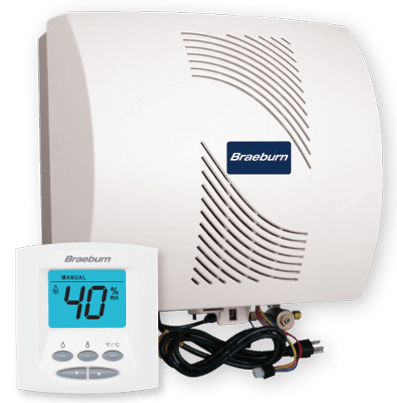
The installation of HVAC systems in every business or residence is very important in order to have a solution for the regulation of temperature that is built with an emphasis on energy efficiency. They play an important role in the protection of equipment from various changes in the weather and the regulation of their temperature as well as regulate the indoor temperature of homes and businesses for the comfort and health of its many occupants. They ensure that every indoor environment can enjoy optimized temperature regulation as well as proper airflow for more comfort.
What are HVAC Systems?
HVAC is an acronym, which means Heating, Ventilation, and Air-Conditioning. As the name indicates, they are integrated systems composed of various elements that carry out specific functions such as heating, cooling, and ventilation for climate control in indoor environments. Climate control is essential in regulating the temperature and moisture levels of indoor environments to make sure that all occupants are not only comfortable but also healthy. Not only that, it is paramount in maintaining the integrity of equipment and other sensitive equipment or materials such as historical artifacts in museums.
How do HVAC Systems Work?
Basically, all HVAC systems are composed of many moving parts. Of course, the design of these systems may vary from one system to another but these parts are generally present in all HVAC systems. Learning about the function of these parts can give you a basic idea of the anatomy of HVAC systems as well as how they work.
Thermostat
Typically, each component would have their own thermostat. For HVAC systems, all the components are integrated into one efficient system, which needs only one thermostat. It is easily the part that you will get to interact with the most. They can be used to manually set the temperature or be set to automatically regulate the temperature and trigger the HVAC system to compensate for any changes to the ambient temperature.
Furnace
The furnace is perhaps the largest part of any HVAC system and will require the most space. It is designed to increase the heat of air that is then delivered to various areas within the home or building via piping systems or air ducts.
Evaporator Coil
The evaporator coil is responsible for cooling down the air when the thermostat is set to lower temperatures, which is then delivered to various areas within the home or building.
Condensing Unit
The condensing unit is an external part of an HVAC system. It houses the refrigerant on the outside of the building. This refrigerant is normally in a gaseous state but is condensed into a liquid state by the condensing unit by cooling the gas, which is then pumped to the evaporator coil to be transformed back into a gas to provide cooling.
Refrigerant Lines
The refrigerant line is responsible for delivering the gaseous refrigerant to the condensing unit.
Air Vents
Air vents are pathways that are used by the cooled or heated air from the duct system into various areas around the home or building. These are typically placed near the ceiling with a slight downward angle in to send air downward.
What are the Different Types of HVAC Systems?
- Heating and Air-Conditioning Split Systems – normally referred to as the traditional HVAC system. They have components inside and outside of the home or building to deliver cool refrigerant or hot air to different rooms.
- Duct-Free Split Systems – they are composed of a heat pump or air conditioner, wires and tubing, and a small fan coil – all components that help the system function without ductwork.
- Zoned Systems – this HVAC system allows you to cool or heat different areas by controlling valves or dampers within the ductwork.
- Humidity Control Systems – these are modern systems with built-in humidifiers and dehumidifiers to provide users with great control over the level of humidity.
How much do HVAC Systems Cost?
The total cost of HVAC systems is difficult to accurately provide. That is because there are many factors that can contribute to the total cost. These include:
Cost of the Equipment
HVAC systems have various components that need to be installed separately. These components are usually priced and bought separately but some can give you an estimate on the price of the entire system, which will still depend on the price of each component. But it goes without saying: higher quality components and systems will definitely cost more.
Installation Costs
The cost of installation is highly dependent on many factors such as the quality of the equipment being installed, the area in which you live, the need for ductwork, and the size of the home or building. Typically, new HVAC system installations can approximately cost $3,000 to $30,000. Of course, this will depend on those factors stated previously. But keep in mind that cheaper does not always mean better. On the contrary, it is usually an indicator of low-quality systems.
Maintenance Costs
The key to ensuring the efficiency of your HVAC system is timely maintenance. Its various parts need to be checked regularly and replaced to make sure everything is always running smoothly. These parts include the thermostats, humidity controllers, dampers, humidifiers, zoning systems, and temperature controls. They require replacement every so often in order to make sure no problems will be encountered in the future. This means things can get very pricey – but not if you choose to purchase from the right vendor. For the best quality and most affordable parts, grab them here.
Operating Costs
The operation of your HVAC system is easily the largest expense you can incur due to large energy expenses. That is why it is extremely important to choose energy efficient systems that allow you to enjoy the benefits of an HVAC system while keeping costs to a minimum – higher efficiency systems mean lower operating costs. It is also important to make sure that your home or office is well-insulated to prevent any leakage and avoid losses.
Due to all of these factors, it is very difficult to provide an exact price for HVAC systems. That is why it is extremely important to have a professional visit your home or office to allow them to assess your area and provide you with an estimate.



